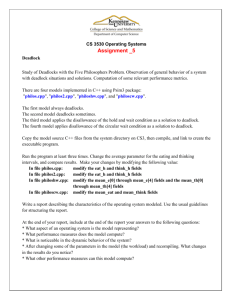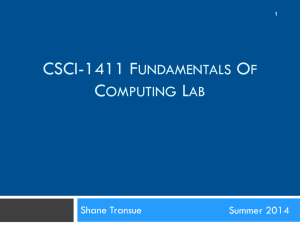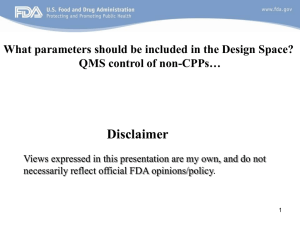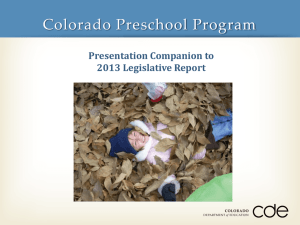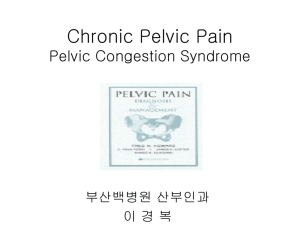Chronic Pelvic Pain
advertisement
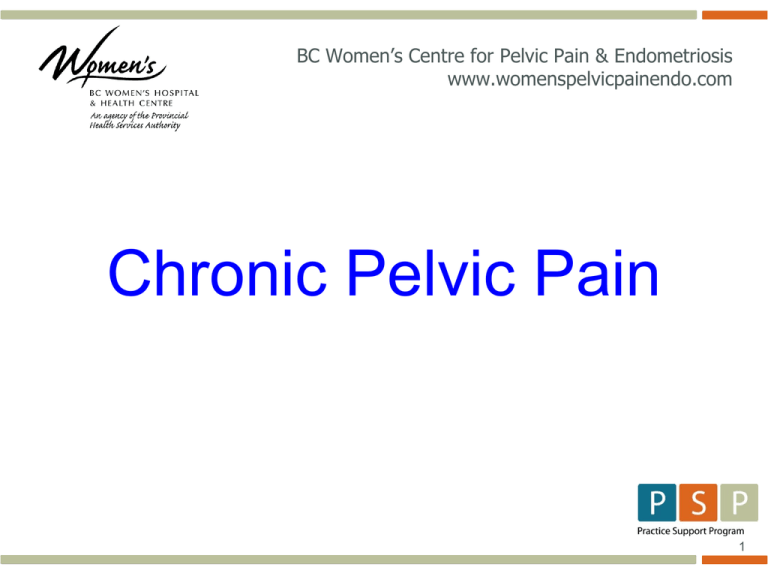
BC Women’s Centre for Pelvic Pain & Endometriosis www.womenspelvicpainendo.com Chronic Pelvic Pain 1 CPP: Objectives At the end of today, you will be able to: 1. List 3 tools that may be useful in assessing CPP 2. Understand nociceptive triggers to CPP and how to decrease them 3. Describe the possible contributors to CPP 4. Know why and how to calm the central NS 5. Understand the effect of narcotic usage on CPP 2 Chronic Pelvic Pain CPP is “one of the most common medical problems affecting women today” (IPPS, 2012) Affects 17%-24% of women aged 18-50 (IPPS, 2012; Zondervan, 1999) 50% of women with CPP also have endometriosis (10% of women overall) … but 50% do not (Leyland et al., 2010) 3 A Case of Chronic Pelvic Pain 27 year old G1P1 woman with a 3 year history of CPP Dysmenorrhea since age 15 Became daily CPP soon after SVD of her son Bilateral adnexal pain radiating to inguinal area Constant, with some exacerbation at menses Aggravated by physical activity Patient requesting hysterectomy because of impact of pain on her life 4 CPP: Medical History Bowel: Alternating constipation & diarrhea Bladder: No symptoms Vaginal: No dyspareunia Surgeries: Laparoscopy x4 (Jan/10, Aug/10, Feb/11, Sep/11); mild endometriosis cauterized; some improvement for ~3 months Medications: Past: Trial of Depot-Lupron = intolerable side-effects and no change in Sx Current: 16mg/d hydromorphone, medical marijuana, 5 continuous OCPs…. Still has daily (7/10) pain and CPP: Psychosocial History Self-report: Lives with long-term partner and their 3 year old son Denies alcohol or recreational drug use Unable to work; difficulty caring for child Mood is frustrated, stressed, not depressed Pain worse when under a lot of stress Childhood sexual abuse (age 6-12) by family member Clinical assessment: Sx of trauma/PTSD, anxiety, depression Multiple life stressors, few social supports, recent losses 6 CPP: Exam Bilateral lower quadrant tenderness with abdominal wall trigger points No uterine or adnexal tenderness No cul-de-sac tenderness or nodularity Pelvic floor is tender and has increased tone 7 Assessment Tools High scores on pain catastrophizing scale (PCS) PHQ9 – 3 GAD7 - 10 8 CPP: Clinical Impression Dysmenorrhea/endometriosis Pelvic floor tension Bowel irritability; likely narcotic side-effects Central sensitization of NS Aggravated by trauma, anxiety, depression, many life stressors, recent losses, few social supports 9 Discussion Questions List 3 tools that may be useful in further assessing this patient? Describe the possible contributors to her pain. Are there any nociceptive triggers that could be decreased? How can she calm her central nervous system? What about her narcotic usage? 10 Action Plan • Discourage hysterectomy, as non-tender uterus and primarily myofascial pain on exam Trial of progestin for suppression of menses Taper off narcotics by 10% q 2 weeks Bowel regimen; diet modifications • Education on chronic pain – NS sensitization, calming the NS, MBSR, pacing activity • Community pelvic floor physiotherapy • Community psychotherapy (MBCT/CBT, grief , trauma) 11 CPP: Summary When working with CPP, it is important to know that: 1. Assessment tools can be very helpful 2. There are many contributors to CPP 3. Nociceptive triggers need to be decreased 4. Calming the central nervous system is crucial 5. Narcotics usage is not always the best option 12 Centre for Pelvic Pain & Endometriosis • Interdisciplinary approach • The team: Gynecologists – Gynecology fellow – Registered nurse – Registered pelvic floor physiotherapist – Registered clinical counsellor – Clerks – 13 Questions 14

